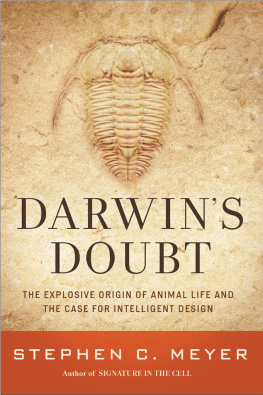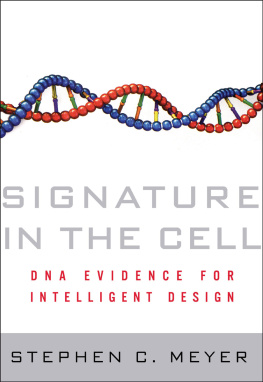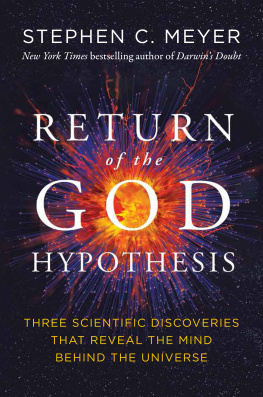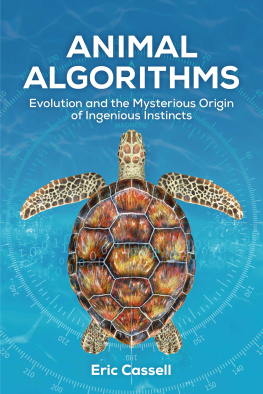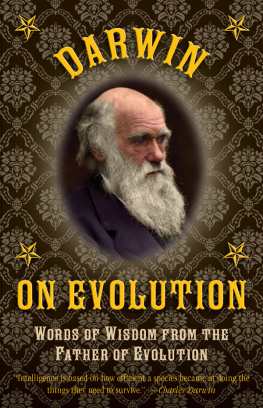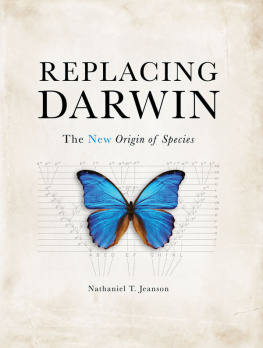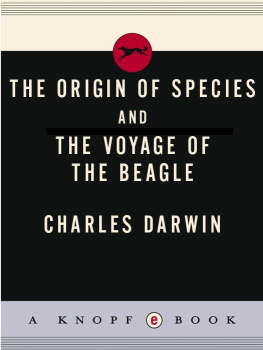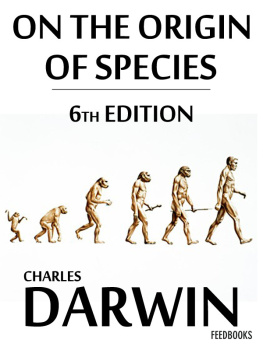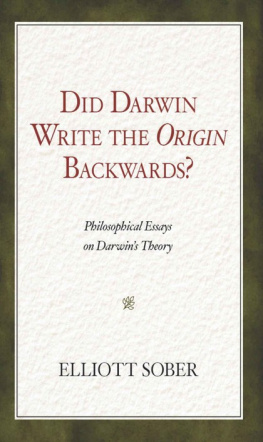
Contents
When people today hear the term information revolution, they typically think of silicon chips and software code, cellular phones and supercomputers. They rarely think of tiny one-celled organisms or the rise of animal life. But, while writing these words in the summer of 2012, I am sitting at the end of a narrow medieval street in Cambridge, England, where more than half a century ago a far-reaching information revolution began in biology. This revolution was launched by an unlikely but now immortalized pair of scientists, Francis Crick and James Watson. Since my time as a Ph.D. student at Cambridge during the late 1980s, I have been fascinated by the way their discovery transformed our understanding of the nature of life. Indeed, since the 1950s, when Watson and Crick first illuminated the chemical structure and information-bearing properties of DNA, biologists have come to understand that living things, as much as high-tech devices, depend upon digital informationinformation that, in the case of life, is stored in a four-character chemical code embedded within the twisting figure of a double helix.
Because of the importance of information to living things, it has now become apparent that many distinct information revolutions have occurred in the history of lifenot revolutions of human discovery or invention, but revolutions involving dramatic increases in the information present within the living world itself. Scientists now know that building a living organism requires information, and building a fundamentally new form of life from a simpler form of life requires an immense amount of new information. Thus, wherever the fossil record testifies to the origin of a completely new form of animal lifea pulse of biological innovationit also testifies to a significant increase in the information content of the biosphere.
In 2009, I wrote a book called Signature in the Cell about the first information revolution in the history of lifethe one that occurred with the origin of the first life on earth. My book described how discoveries in molecular biology during the 1950s and 1960s established that DNA contains information in digital form, with its four chemical subunits (called nucleotide bases) functioning like letters in a written language or symbols in a computer code. And molecular biology also revealed that cells employ a complex information-processing system to access and express the information stored in DNA as they use that information to build the proteins and protein machines that they need to stay alive. Scientists attempting to explain the origin of life must explain how both information-rich molecules and the cells information-processing system arose.
The type of information present in living cellsthat is, specified information in which the sequence of characters matters to the function of the sequence as a wholehas generated an acute mystery. No undirected physical or chemical process has demonstrated the capacity to produce specified information starting from purely physical or chemical precursors. For this reason, chemical evolutionary theories have failed to solve the mystery of the origin of first lifea claim that few mainstream evolutionary theorists now dispute.
In Signature in the Cell, I not only reported the well-known impasse in origin-of-life studies; I also made an affirmative case for the theory of intelligent design. Although we dont know of a material cause that generates functioning digital code from physical or chemical precursors, we do knowbased upon our uniform and repeated experienceof one type of cause that has demonstrated the power to produce this type of information. That cause is intelligence or mind. As information theorist Henry Quastler observed, The creation of information is habitually associated with conscious activity. Whenever we find functional informationwhether embedded in a radio signal, carved in a stone monument, etched on a magnetic disc, or produced by an origin-of-life scientist attempting to engineer a self-replicating moleculeand we trace that information back to its ultimate source, invariably we come to a mind, not merely a material process. For this reason, the discovery of digital information in even the simplest living cells indicates the prior activity of a designing intelligence at work in the origin of the first life.
My book proved controversial, but in an unexpected way. Though I clearly stated that I was writing about the origin of the first life and about theories of chemical evolution that attempt to explain it from simpler preexisting chemicals, many critics responded as if I had written another book altogether. Indeed, few attempted to refute my books actual thesis that intelligent design provides the best explanation for the origin of the information necessary to produce the first life. Instead, most criticized the book as if it had presented a critique of the standard neo-Darwinian theories of biological evolutiontheories that attempt to account for the origin of new forms of life from simpler preexisting forms of life. Thus, to refute my claim that no chemical evolutionary processes had demonstrated the power to explain the ultimate origin of information in the DNA (or RNA) necessary to produce life from simpler preexisting chemicals in the first place, many critics cited processes at work in already living organismsin particular, the process of natural selection acting on random mutations in already existing sections of information-rich DNA . In other words, these critics cited an undirected process that acts on preexistent information-rich DNA to refute my argument about the failure of undirected material processes to produce information in DNA in the first place.
For example, the eminent evolutionary biologist Francisco Ayala attempted to refute Signature by arguing that evidence from the DNA of humans and lower primates showed that the genomes of these organisms had arisen as the result of an unguided, rather than intelligently designed, processeven though my book did not address the question of human evolution or attempt to explain the origin of the human genome, and even though the process to which Ayala alluded clearly presupposed the existence of another information-rich genome in some hypothetical lower primate.
Other discussions of the book cited the mammalian immune system as an example of the power of natural selection and mutation to generate new biological information, even though the mammalian immune system can only perform the marvels it does because its mammalian hosts are already alive, and even though the mammalian immune system depends upon an elaborately preprogrammed form of adaptive capacity rich in genetic informationone that arose long after the origin of the first life. Another critic steadfastly maintained that Meyers main argument concerns the inability of random mutation and selection to add information to [preexisting] DNA and attempted to refute the books presumed critique of the neo-Darwinian mechanism of biological evolution accordingly.
I found this all a bit surreal, as if I had wandered into a lost chapter from a Kafka novel. Signature in the Cell simply did not critique the theory of biological evolution, nor did it ask whether mutation and selection can add new information to preexisting information-rich DNA. To imply otherwise, as many of my critics did, was simply to erect a straw man.
To those unfamiliar with the particular problems faced by scientists trying to explain the origin of life, it might not seem obvious why invoking natural selection does not help to explain the origin of the first life. After all, if natural selection and random mutations can generate new information in living organisms, why can it also not do so in a prebiotic environment? But the distinction between a biological and prebiotic context was crucially important to my argument. Natural selection assumes the existence of living organisms with a capacity to reproduce. Yet self-replication in all extant cells depends upon information-rich proteins and nucleic acids (DNA and RNA), and the origin of such information-rich molecules is precisely what origin-of-life research needs to explain. Thats why Theodosius Dobzhansky, one of the founders of the modern neo-Darwinian synthesis, can state flatly, Pre-biological natural selection is a contradiction in terms. Clearly, it is not sufficient to invoke a process that commences only once life has begun, or once biological information has arisen, to explain the origin of life or the origin of the information necessary to produce it.
Next page
